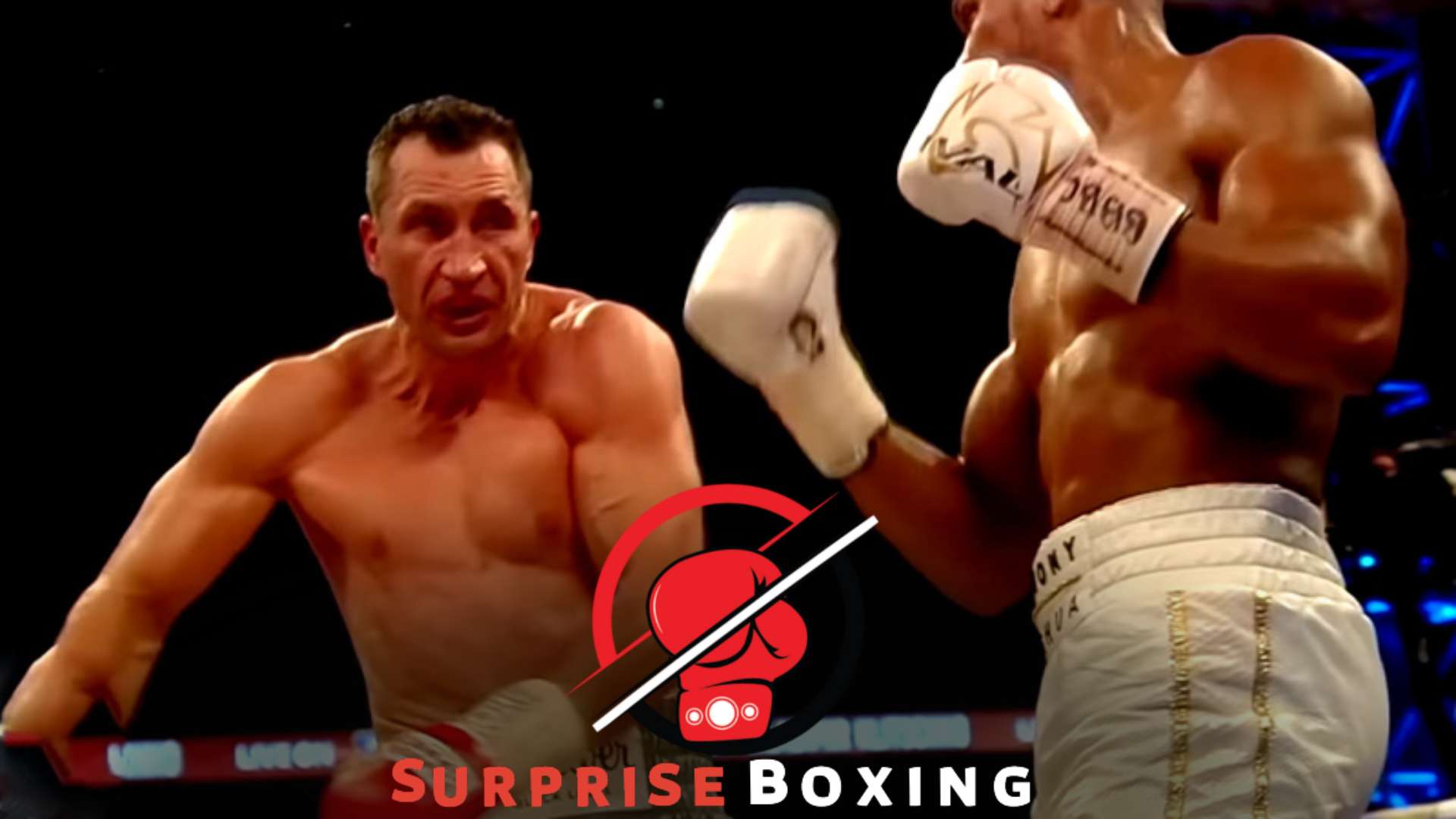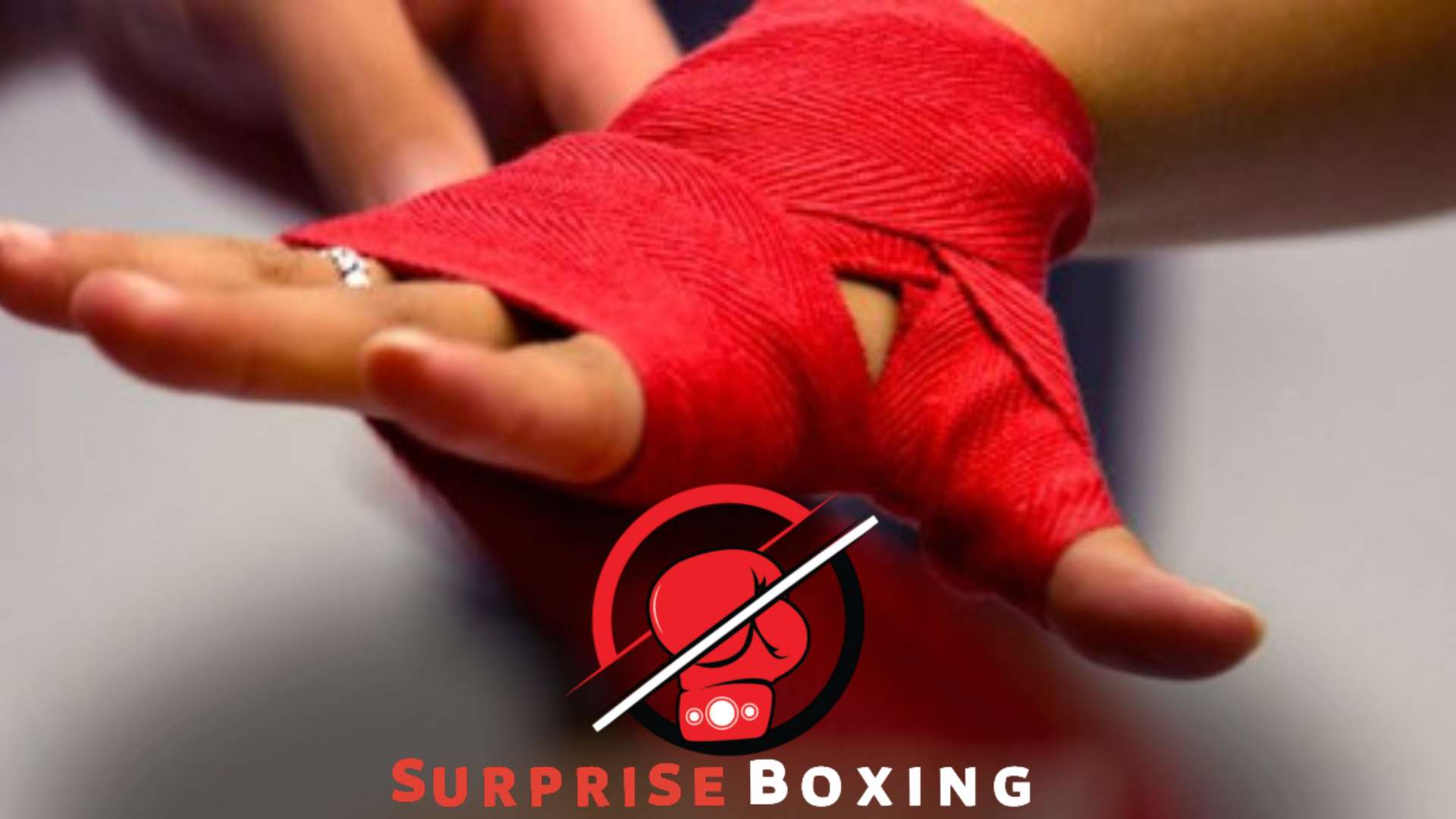Yes, short arms can be advantageous in boxing due to faster hand speed and increased maneuverability. Short arms can give boxers an advantage in the ring, as they tend to have faster hand speed and increased maneuverability, allowing them to deliver punches quickly and effectively.
The shorter reach may also make it harder for opponents to land clean punches, as the boxer with short arms can stay inside their opponent’s longer reach.
Additionally, shorter arms can provide better defensive capabilities, allowing boxers to bob and weave more easily.
However, it is important to note that boxing is a complex sport, and factors such as skill, technique, and strategy also play a crucial role in determining success in the ring.
Ultimately, a boxer’s effectiveness is determined by arm length and various factors.
The Physiology of Short Arm Length
The impact of short arm length on boxing performance is a fascinating topic in physiology. Exploring whether shorter arms benefit boxing reveals intriguing insights into the sport and its tactics.
With a shorter arm length, boxers may have distinct advantages and disadvantages that can profoundly influence their punching power and defensive techniques.
Understanding the physiology of short arm length is crucial in comprehending the unique dynamics of boxing.
Regarding boxing, the length of an athlete’s arms can significantly impact their performance in the ring.
In this section, we will delve into the physiology of short arm length and how it can affect a boxer’s ability to excel in the sport.
Short Arm Length: Advantages and Disadvantages
Short arm length in boxing can offer both advantages and disadvantages.
Let’s take a closer look at how it can impact a boxer’s performance:
- Reduced reach: Shorter arms typically mean a shorter reach. This can pose challenges when landing punches on opponents with longer reach. Boxers with short arm length may work harder to get within striking distance and may be disadvantaged in landing clean hits.
- Defensive maneuverability: Shorter arms can also provide certain defensive benefits. Boxers with shorter arms may find protecting their head and body easier against punches. The compactness of their arm length allows for quicker defensive movements, making it more challenging for opponents to land solid blows.
- Power in close combat: While longer arms may provide an advantage in reach, shorter arms can excel in close combat situations. When fighting at close range, boxers with short arm lengths can generate more power in their punches. The reduced leverage due to shorter arms can result in stronger impacts when landing punches on opponents.
- Agility and speed: Shorter arms can contribute to increased agility and speed in the ring. The decreased arm length allows for faster movements and quicker punches, enabling boxers to exploit gaps in their opponent’s defense more effectively.
- Adaptability: Boxers with short arm length often develop a unique fighting style that capitalizes on their physical attributes. They may focus on developing strong footwork, head movement, and precise counterpunching techniques to overcome the challenges posed by their shorter reach.
- Overcoming disadvantages: While short arm’s length can present challenges, it is important to remember that each boxer’s style and skill set plays a significant role in their success. Many boxers with shorter arm lengths have overcome their limitations through hard work, strategic training, and honing their technique to maximize their strengths.
Short arm length in boxing has its advantages and disadvantages. While it may affect a boxer’s reach and punching power, it can also benefit defensive maneuverability, agility, and speed.
Ultimately, a boxer’s success in the ring depends on their skill, strategy, and ability to adapt to physical attributes.
Short Arms: A Strategic Advantage in the Boxing Ring
With their strategic advantage in the boxing ring, short arms can surprise opponents with quick and powerful punches, allowing for effective close-range fighting.
Embracing their unique physique, boxers with shorter arms have the potential to excel in the sport.
Have you ever wondered if having short arms could be an advantage in the boxing ring? While longer arms may seem like a natural advantage for reaching opponents from a distance, shorter arms can provide unique benefits that give fighters an edge.
Let’s explore why short arms can be a strategic advantage in boxing.
Agility and Speed
- Shorter arm length allows quicker punches, enabling boxers to strike with agility and speed.
- The reduced distance between the boxer and their opponent means less time is needed to throw punches, increasing their chances of landing quick blows.
Elusive Defense
- Shorter arms can make it challenging for opponents to land punches, as the boxer can slip in and out of their opponent’s striking range more easily.
- The compact arm length allows quicker defensive maneuvers, enabling boxers to dodge and counter-attack swiftly.
Powerful Close-Range Combat
- Shorter arms excel in close-range combat, where uppercuts and hooks can be devastatingly effective.
- The reduced distance between the boxer and their opponent maximizes the power behind every punch thrown, making short-armed fighters dangerous in the clinch.
Misdirection and Angles
- Shorter arm length allows for deceptive feints and misdirection, confusing opponents and creating counter-attack openings.
- Boxers with shorter arms can utilize angles more effectively, moving in strategic ways to capitalize on their opponent’s vulnerabilities.
Precision and Accuracy
- Short arm length enables boxers to focus on precision and accuracy, as they must rely on landing clean, well-timed punches to overcome the reach disadvantage.
- The necessity to strike with precision encourages short-armed fighters to develop exceptional technique and footwork.
Adaptable Strategy
- Boxers with shorter arms often adopt a more defensive strategy, relying on counter-punching and evasive footwork to frustrate opponents.
- Short-arm advantages allow for adaptable fighting styles, enabling boxers to tailor their approach based on the strengths and weaknesses of their opponents.
While having short arms may seem like a disadvantage in the boxing ring, it can provide fighters with unique advantages.
Agility, speed, elusive defense, powerful close-range combat, misdirection, precision, and adaptability are all strategic benefits that short-armed boxers can leverage to overcome disadvantages.
So, next time you see a boxer with shorter arms, remember that they may possess skills and tactics that can surprise even the most seasoned opponents.
Short Arms: Navigating Reach Disadvantages and Overcoming Challenges in Boxing
Boxing with short arms may pose disadvantages, but they can be overcome. Learn how to maximize power, speed, and technique to excel in the ring, regardless of arm length.
Boxing is a sport where physical attributes can greatly impact an athlete’s performance. One such attribute is arm’s length. While long arms undoubtedly have advantages regarding reach and leverage, short arms should not be seen as a hindrance.
Many short-arms boxers have found ways to navigate, reach disadvantages, and overcome challenges in the ring.
In this section, we will explore some strategies to help boxers with short arms excel in their sport.
Utilize Speed and Agility
- Utilize your speed and agility to close the distance between you and your opponent. Use quick footwork and head movement to get inside his/her reach and launch rapid combinations.
- By staying on the move and making yourself a difficult target to hit, you can nullify the advantages of longer-armed opponents.
- Quick jabs and hooks can be effective tools for getting inside and landing punches without exposing yourself to counterattacks.
Work On Defense: Slip, Bob, and Weave
- Focus on improving your defensive skills, such as slipping, bobbing, and weaving.
- By effectively slipping punches, you can avoid taking damage while positioning yourself for counters.
- Mastering these defensive maneuvers will allow you to get in close without leaving yourself vulnerable to long-range strikes.
Develop Power in Close Quarters
- Your power may lie in close quarters as a boxer with shorter arms. Work on developing strong hooks and uppercuts to exploit opportunities when you get close to your opponent.
- Shorter punches can generate significant power when delivered from the right position, making them an effective weapon for boxers with shorter arms.
- Focus on strengthening your core and developing explosive hip rotation to maximize the power behind your punches.
Study Opponents’ Weaknesses
- Knowledge is power, especially in the ring. Study your opponent’s fighting styles and identify weaknesses that you can exploit.
- Analyze their defense mechanisms, footwork patterns, and tendencies. Tailor your strategy to capitalize on their weaknesses and avoid their strengths.
- By understanding their weaknesses and developing a game plan, you can neutralize the advantages of longer reaches.
Adaptation is Key
- While having short arms may present challenges, it is important to remember that no two boxers are the same.
- Every individual has unique strengths and weaknesses, and it is crucial to adapt your style to make the most of what you have.
- Work with a coach to develop a customized training routine that maximizes your strengths as a boxer with shorter arms.
Short arms may require different strategies and techniques, but they should not be considered a disadvantage in boxing. With speed, agility, defensive prowess, and adaptation, boxers with short arms can overcome the disadvantages and succeed in the ring.
So, embrace your physical attributes, focus on your strengths, and let your skills do the talking inside the squared circle.
Training Techniques and Adaptive Strategies for Short-Armed Boxers
Discover effective training techniques and adaptive strategies specifically designed for short-armed boxers in “Mastering the Ring.” Learn how to leverage the unique advantages of short arms in boxing.
Boxing is a sport that requires a unique combination of skill, strategy, and physical attributes. One of these attributes is arm’s length, a topic that often sparks debate among boxing enthusiasts.
We will explore the advantages and challenges that short-armed boxers may face in the ring.
We will also delve into training techniques and adaptive strategies that can help short-armed boxers excel in this demanding sport.
Understanding Short Arms in Boxing
- Short arms can be defined as arms that are shorter in proportion to a boxer’s body. In boxing, arm length is crucial because it determines a boxer’s reach, which is the distance they can cover with their punches.
- Short-armed boxers may face some inherent challenges due to their limited reach. However, it’s important to note that successful boxers come in all shapes and sizes, and arm length is just one factor among many that contribute to their performance in the ring.
Leveraging Strengths
While short-armed boxers may lack the reach advantage of their longer-armed counterparts, they can rely on other strengths to make an impact in the ring.
Here are some training techniques and adaptive strategies that can help short-armed boxers excel:
- Speed and agility: Short-armed boxers often possess exceptional speed and agility. By focusing on developing their footwork, quick reflexes, and head movements, they can effectively close the distance between themselves and their opponents, making it more challenging for their opponents to land punches.
- Inside fighting: Short-armed boxers tend to be more comfortable fighting on the inside, where they can work in close quarters. They can exploit their opponent’s vulnerabilities and maximize their power by mastering infighting techniques such as hooks, uppercuts, and body shots.
- Defensive skills: Short-armed boxers can prioritize defense as a key strategy. By honing their defensive skills, including slipping, blocking, and counterpunching, they can neutralize their opponents’ longer reach and create opportunities to launch offensive strikes.
- Strategic game plans: Short-armed boxers must develop strategic game plans that capitalize on their strengths while mitigating the disadvantages they may face. This can involve studying opponents, identifying weaknesses, and devising tactical approaches to their styles.
Remember, in the world of boxing, there is no one-size-fits-all approach. Each boxer has its own unique style and strengths that can be optimized to achieve success in the ring.
Short-armed boxers can navigate their challenges and emerge as formidable opponents by understanding and adapting to their physical attributes.
So, if you’re a short-armed boxer, don’t let arm length discourage you. Embrace your strengths, invest in tailored training, and unleash your full potential in the ring.
The Psychological Aspect
Boxing requires mental fortitude and strategic adaptations. The length of arms doesn’t determine success in the ring; it’s the fighter’s skill, speed, and ability to strategize that matter most.
As in any sport, overcoming mental challenges is crucial, regardless of physical attributes.
Are Short Arms Good for Boxing?
Many aspiring boxers wonder whether having short arms can be an advantage or a disadvantage in the sport. While there are physical aspects to consider, such as reach and punching power, the psychological aspect of boxing is equally crucial.
In this section, we will delve into the mental challenges boxers face with short arms and explore the strategic adaptations they can make to excel in the ring.
Psychological Challenges Faced By Boxers With Short Arms
- Awareness of reach disadvantage: Boxers with short arms often face the psychological challenge of being aware of their reach disadvantage compared to opponents with longer arms. This can create feelings of frustration and a sense of being overpowered.
- Overcoming doubts and self-belief: Short-armed boxers must work on overcoming doubts and building self-belief. They must develop mental resilience to combat feelings of being at a disadvantage and focus on maximizing their strengths.
- Effective defensive strategies: Short-armed boxers can face difficulties defending against opponents with longer reach. They need to learn effective defensive techniques such as head movement, footwork, and upper body positioning to counter and neutralize their opponents’ attacks.
Strategic Adaptations for Boxers With Short Arms
- Focus on speed and agility: Boxers with short arms can compensate for their reach disadvantage by focusing on developing exceptional speed and agility. This allows them to close the distance quickly, launch swift combinations, and effectively evade their opponent’s punches.
- Improved footwork: Short-armed boxers need to work on enhancing their footwork skills. By utilizing precise footwork techniques such as angles, pivots, and lateral movement, they can create openings, attack from advantageous positions, and avoid staying within the range of longer-armed opponents.
- Inside fighting expertise: Boxers with short arms can excel at fighting on the inside, where their shorter reach becomes less of a disadvantage. By focusing on developing strong infighting skills, such as effective clinching, short hooks, and uppercuts, they can maximize their punching power and launch devastating close-range attacks.
- Tactical game planning: Short-armed boxers must employ strategic game planning to neutralize longer-reach opponents. They can focus on disrupting their opponent’s rhythm, executing counter-punching strategies, and utilizing feints to create openings and exploit their opponent’s vulnerabilities.
Boxers with short arms can excel in the ring by understanding the psychological challenges and implementing strategic adaptations. While each may provide certain advantages, the mental fortitude and strategic approaches ultimately determine success in the sport of boxing.
Remember, it’s not about the size of the arms but rather the size of the fighter’s determination and skill.
Case Studies
Short-armed boxers often face challenges in boxing due to the reach disparity. However, case studies reveal that success in the sport relies on technique, strategy, and agility, making short arms not necessarily a disadvantage in the ring.
Keep reading to explore how these boxers overcome the reach disadvantage.
Short arms can challenge boxers when facing opponents with longer reaches. To explore this further, let’s take a look at some case studies highlighting how short-armed boxers have handled these reach disparity challenges.
Oliver “the Bulldog” Harris
- Faced opponents with significant reach advantages throughout his career.
- Employed a strategic fighting style focused on close-quarters combat.
- Utilized ducking and weaving techniques to slip inside his opponents’ longer reach.
- Employed swift and powerful hooks to capitalize on short-range opportunities.
Maria “the Hurricane” Martinez
- She excelled despite having shorter arms than most of her opponents.
- Developed exceptional footwork to close the distance quickly.
- Utilized aggressive inside fighting techniques to neutralize reach disparities.
- Mastered the art of infighting, landing devastating uppercuts and body shots.
Victor “the pocket rocket” Rodriguez:
- Overcame reach challenges by relying on speed, agility, and precision.
- Utilized a hit-and-move strategy to frustrate opponents with longer arms.
- Focused on rapid jabs and counterpunches to evade and strike simultaneously.
- Played to his strengths by constantly changing angles and maintaining a high pace of attack.
Sarah “the dynamo” Thompson:
- Tackled reach disparities head-on by developing impeccable timing and accuracy.
- Leveraged her compact reach to slip and counter-punch with precision.
- Executed lightning-fast combinations to overwhelm opponents with longer reaches.
- Worked on perfecting her defensive maneuvers, minimizing damage while closing the gap.
Derek “the beast” Wilson:
- Demonstrated that short arm length doesn’t define a boxer’s success.
- Adopted an aggressive in-fighting style, nullifying reach disadvantages.
- Developed a powerful left hook to capitalize on his shorter arm range.
- Worked relentlessly on strength training to deliver knockout blows at close range.
Even with shorter arms, these talented boxers proved that technique, strategy, and determination can prevail against reach disparities.
By honing their skills, leveraging unique fighting styles, and capitalizing on their strengths, they overcame challenges and excelled in their boxing careers.
So, while short arms may present initial hurdles, they can be overcome with the right approach and mindset.
Evaluating the Role of Arms Length in Boxing Performance
Boxing performance is influenced by arm length, and shorter arms can be advantageous. Shorter arms provide boxers with a closer and more powerful range of attack, allowing for quicker punches and increased accuracy.
So, contrary to popular belief, short arms can be an asset in the boxing ring.
Are short arms advantageous or disadvantageous in the world of boxing? The length of a boxer’s arms can play a crucial role in their performance inside the ring.
In this section, we will explore expert insights that shed light on how arm length can impact boxing success.
Let’s dive into the evaluation of this intriguing subject:
Advantages of Short Arms in Boxing
- Greater power potential: Shorter arms can generate more power due to increased leverage and compact movements.
- Strong defensive technique: Shorter arm length allows boxers to maintain a tighter guard, making defending against opponents’ punches easier.
- Improved inside fighting: Shorter arms offer an advantage in close-quarters combat by enabling boxers to land powerful body shots and uppercuts.
Advantages of Long Arms in Boxing
- Increased reach advantage: Longer arms can strike from a distance, making it easier to land jabs and keep opponents at bay.
- Enhanced range of defensive movements: Long arms offer better reach in evading punches, allowing boxers to create distance and avoid getting hit.
- Effective counterpunching: Long-arm boxers can effectively use their reach to deliver strong counterpunches while keeping opponents at a distance.
Considerations for Arms Length In Boxing
- Individual boxing style: Arm length is just one aspect of a boxer’s overall technique, which varies depending on their style and strategy.
- Adaptability and skills: A boxer’s proficiency in utilizing their arm length, footwork, and techniques can compensate for any disadvantage related to arm length.
- Opponent matchups: Depending on the opponent’s arm length and fighting style, either longer or shorter arms can prove advantageous in specific scenarios.
While arm length does play a role in boxing, it is not the sole determinant of a boxer’s success. Both short and long arms carry distinct advantages that can be capitalized upon by skilled and adaptable fighters.
A boxer’s overall skill set, strategy, and ability to capitalize on their arm length will ultimately determine their performance in the ring.
Frequently Asked Questions
Are Short Arms An Advantage in Boxing?
Short arms can be advantageous in boxing, allowing quicker and more explosive punches. Boxers with shorter arms excel in close-range fighting, delivering powerful hooks and uppercuts. With less reach, they can also be more difficult for opponents to land punches on.
Do Long Arms Give An Advantage in Boxing?
Having long arms in boxing can provide several advantages. The increased reach allows boxers to strike from a distance, making land jabs and straight punches easier. Long arms also provide greater defensive coverage, making it harder for opponents to land punches on the boxer.
Can Short-Armed Boxers Be Successful?
Absolutely! Short-armed boxers can be highly successful by using their unique advantages strategically. They can focus on developing powerful punches and close-range fighting skills. Short-armed boxers can effectively disrupt their opponents’ rhythm and score knockout victories by closing the distance quickly and attacking opponents up close.
Conclusion
In boxing, the topic of arm’s length is often debated. While it may seem that longer arms would give a boxer a significant advantage, the reality is that short arms can be just as effective in the ring.
The key lies in understanding how to leverage your arm’s length to your advantage and maximizing your strengths. Shorter arms may allow for quicker and tighter punches and increased maneuverability in the ring.
Additionally, shorter arms can provide better opportunities for close-range fighting and body shots.
Ultimately, it’s not solely about arm length but how well a boxer utilizes their strengths and adapts their strategy. Regardless of arm length, a skilled and strategic boxer can still be successful in the ring.
So, whether your arms are long or short, focus on honing your skills, refining your technique, and constantly improving your overall boxing prowess.









